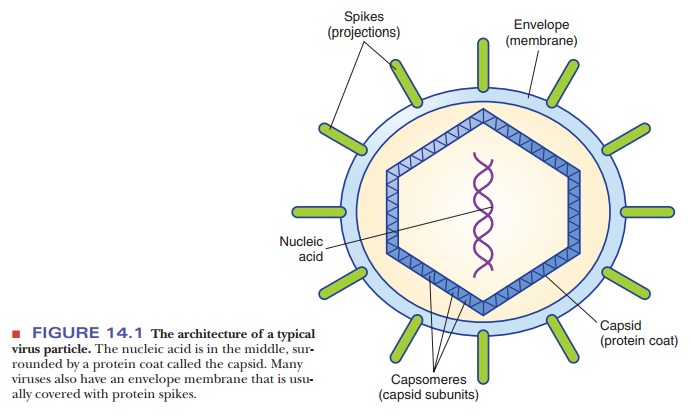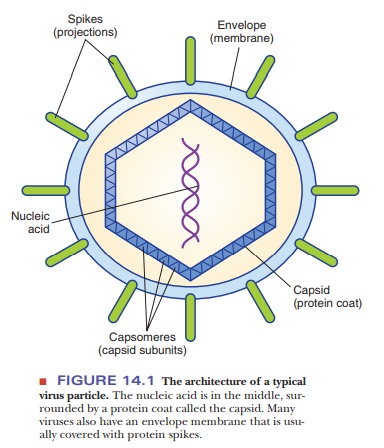Chapter: Biochemistry: Viruses, Cancer, and Immunology
What is the structure of a virus?

What is the structure of a virus?
Viruses are very small particles composed of nucleic acid and
protein. The entire virus particle is called the virion. At the center of the virion is the nucleic acid.
Surrounding this is the capsid,
which is a protein coat. The combination of the nucleic acid and the capsid is
called the nucleocapsid, and, for
some viruses, such as the rhinovirus, that is the extent of the particle. Many
other viruses, including HIV, have a membrane
envelope surrounding the nucleocapsid. Many viruses also have protein spikes that help it attach to
its host cell. Figure 14.1 shows the main features of a virus.

The overall shape of a virus varies. The classic viral shape most
often seen in the literature has a hexagonal capsid with a rod sticking out of
it that attaches to the host cell and acts like a syringe to inject the nucleic
acid. Figure 14.2 shows the T2 bacteriophage of E. coli, a classic example of a virus of this shape. Tobacco mosaic
virus (TMV), on the other hand, has a rod shape, as shown in Figure 14.3.


Related Topics